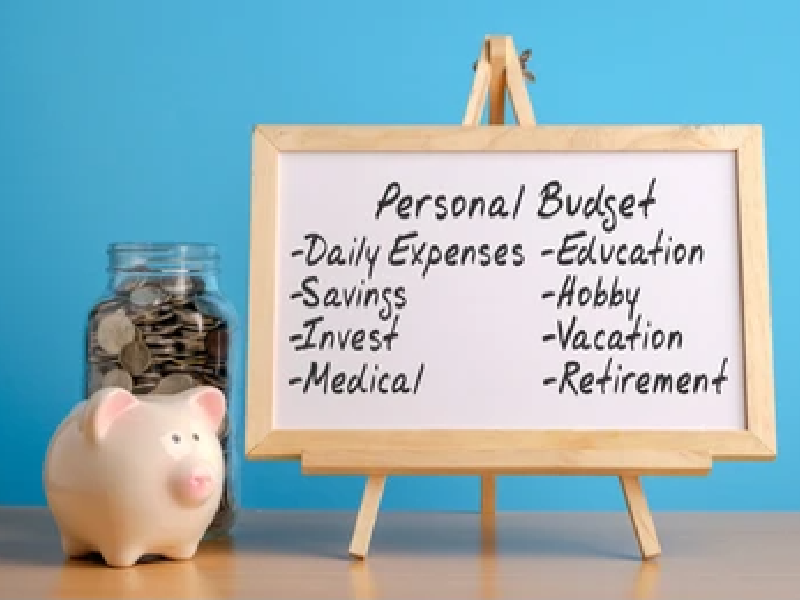
These five problems are haunting almost every salaried guy like me; the Budget must solve these!
I’m a professional working in an MNC currently in my mid-thirties, residing in Mumbai.
I’m a typical ‘salaried-class’ employee who starts his day by leaving at 8 am sharp and working at the office till I have only that much energy to last through my journey back home. Social weekends and wall-street lifestyle is almost a mirage.
I do earn well – at least that’s what the CTC on my offer letter says, but I’m hardly living the life a six-digit per month guy should be living. In fact, every month-end I’m left wondering if I’m even earning anything respectable? I barely manage to pay the rent, my child’s school fees and a few outstanding bills before I’m left with a pittance.
Today, I’ve just summed all my ‘CTCs’ I’ve received throughout my career and wrote it on a piece of paper and right below it, is my current net worth (all the money I have to my name today). Honestly, I had seen this disaster coming, but today I’m on a mission – a mission to find out why is it so difficult for a ‘salaried employee’ to become a big guy.
Here’s what I realized.
Problem #1: Businessmen pay tax on what’s left after spending; I pay tax even before I earn!
I pay my taxes even before I receive my paycheck. Once I receive my paycheck, I spend on a variety of things including costs related to my profession.
Now, if I were running my own company, I would pay tax only on the amount left after deducting all expenses. However, since I receive salary, I pay tax on the entire amount I receive and then spend out of whatever remains.
Being a financial services professional, my profession demands that I dress in formal suits almost daily and subscribe to industry journals to stay on top of happenings in and around the globe. There are similar such expenses that need to be incurred for the profession I serve. Imagine the cost!?
Budget Ask: Bring back standard deductions
Since AY 2006-07, the standard deduction system had been abolished for salaried employees but at the same time business expenses continued to be deductible.
I feel, given the way prices are inflating and the cost of living is increasing, it is important to at least allow some standard deduction to make room for expenses related to the profession.
The amount I want as a standard deduction?
Though it would be only fair to allow 10% of the CTC since that is the average rate at which cost of living increases, I wouldn’t complain if we get at least INR 1 lakh to begin with.
___________________________________________________________________
Problem #2: The world has stopped using steam engines. Travel is a meaningful expense.
Though the pink newspapers are constantly talking about volatility around prices for crude oil, the ground reality is that prices of petrol have been rising steadily since quite some period and the expectation is that, because of this, cost of travel will continue to go up.
In last year’s budget, the government announced that the deduction for conveyance would be ‘doubled’ to INR 1,600 p.m. from INR 800 p.m. Now, to place things into perspective, I stay in a suburb called Mulund and my office is in a mainstream corporate hub called BKC; both in Mumbai. One-way trip from my home to the office costs ~INR 250 in an Uber Pool and the typical monthly expenditure for such conveyance goes up to almost INR 12,500.
Budget Ask: The exemption limit for conveyance allowance needs to be bumped up realistically
Though asking for a full sop on conveyance would be extremely detrimental to national accounts, perhaps a slight limit increase to an amount between INR 3,000 – INR 4,500/month would offer taxpayers a healthy respite.
___________________________________________________________________
Problem #3: The kid’s school fees are burning a hole in my pocket & the tax-system is poking fun at it
Just a few months back, I had enrolled my kid into a primary school. Here’s what I needed to pay at every step – Admission form: Rs. 1,500, One-time school ‘development & maintenance’ fee: Rs. 30,000, Annual tuition fee: Rs. 30,000, Extra-curricular activities: Rs. 10,000, Uniform & other school-kit stuff: Rs. 12,000 – Grand total: Rs. 83,500. And this does not include the numerous fests, carnivals and projects which need more money to be spent.
I’m not ranting about how costly basic education has become (or maybe I am). But, this is not the point I’m trying to make here. The moment of burn comes in around the month of February where for a moment I get excited to see a line item called “children’s education” under an exemption head only to realize that the exemption limit is INR 100/child/month. Yes, I have not missed any zeroes; this is it.
Now, can someone please find me a school which would be generous enough to charge INR 1,200/ year for good education?
Budget Ask: Either develop a good school which charges only 1,200 bucks a year or have some heart to increase the exemption limits to realistic levels
See, the current exemption limit of Rs.100 per child per month under “children’s education” clearly serves no purpose to any segment of the society and is impressively outdated – the last amendment was made almost seventeen years back in the year 2000.
Suggest we increase the exempt amount to a much more reasonable range; perhaps between Rs. 2,500 and Rs.3,000 per child per month.
___________________________________________________________________
Problem #4: Somewhere between Dad claiming medical reimbursement up to Rs.15,000 and me claiming the same amount, tax laws went obsolete
When I was yet a school-going kid, Dad could get our family’s medical bills reimbursed to a maximum limit of Rs. 15,000. This meant a lot to our family budget. This was around the year 1999. Today, fast forward almost twenty years, even I get to claim the same amount as medical reimbursement.
With the variety and occurrence of ailments increasing in India by the day and healthcare costs skyrocketing, this cap of a paltry INR 15,000 seems no less than a joke.
Budget Ask: Revise exemption limits for medical reimbursement
In 2013, an Assocham survey revealed that almost 89% of respondents wanted medical reimbursement limits to be increased to INR 50,000 and a similar number in the same survey conducted in 2016. Such is the state of people where healthcare costs are getting out of hand and they are craving some respite, which is only fair.
The request is to hike the limits to at least INR 50,000 if not more.
__________________________________________________________________
Problem #5: I want to save for the longer term, but without government interest it gets too difficult
Most investments deductible for income tax computation fall under section 80C. The problem is that there’s just too much included in 80C under a measly limit of INR 1.5 lakh. In most cases, too much of it gets filled up only by PF deductions from salary, home loan principal repayment and life insurance amounts. There’s just not enough space to motivate long-term savings.
Budget Ask: Either increase the limit under 80C or make additional provisions for special investments
I believe, a provision of INR 3 lakh under section 80C would do very well for the government to spur investments within the economy. Also, the government should allow for additional deduction (apart from 80C) for certain types of investments which can typically offer them more direct assistance (just like the additional exemption for NPS).
Interestingly, I’ve noticed a couple of new ELSS mutual funds being launched with a ten-year lock-in instead of the traditional three-year one. Honestly, if the government would offer additional tax benefits for ten-year ELSS funds, I would not mind investing into it only to forget about it till my retirement.
__________________________________________________________________
While many of the solutions may superficially imply stress on national accounts, but some more thought and finesse in execution can in fact help widen the tax-coverage and increase compliance which would eventually translate into a healthier tax economy.



























